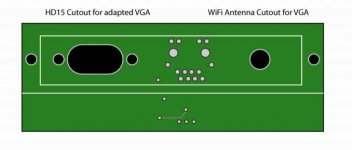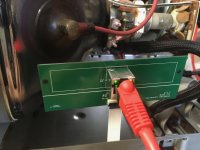techknight
Well-known member
I'm not against open-sourcing the PCB designs, but I'll talk to my buddy Mark who designed the boards about that.
I will definitely open source the driver code.
However, no point in open-sourcing anything until we get it to work.
We've managed to squeeze the current design into a 2 layer board, which makes the PCBs super-cheap, but going to 4 layers wouldn't be prohibitive. The boards are very small.
I don't want the product to wither & die either, but as Bolle points out making real stuff can be an expensive & time consuming business. Mark and I do this stuff for a living so we're well aware of what's involved. Maybe once we've got it working we can talk to someone else who has an interest in building them commercially.
Once it is working, I hope you do open-source it because I want to port it to the Macintosh Portable after you get it all done. Its 24-bit addressing, but it shouldnt matter.




